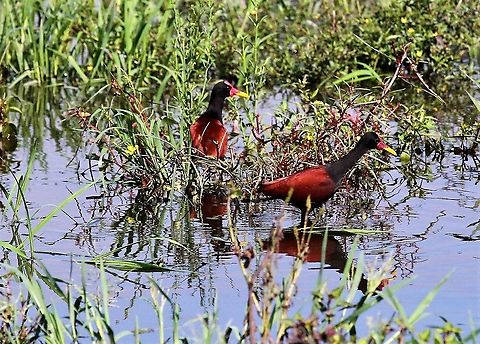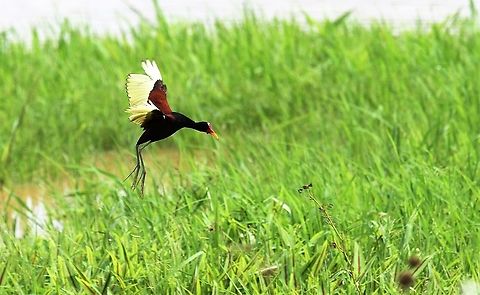
Appearance
These are conspicuous and unmistakable birds. They are 17-23 cm long, but the females are larger than the males. The adults have a chestnut back and wing coverts, with the rest of the body mainly black. In flight the greenish yellow flight feathers are obvious. The yellow bill extends up as a red coot-like head shield and a reddish wattle, and the legs and very long toes are dull blue-grey. There is a long sharp spur on the bend of the wing.Young birds initially have entirely white underparts, and can always be identified by the presence of white in their plumage.
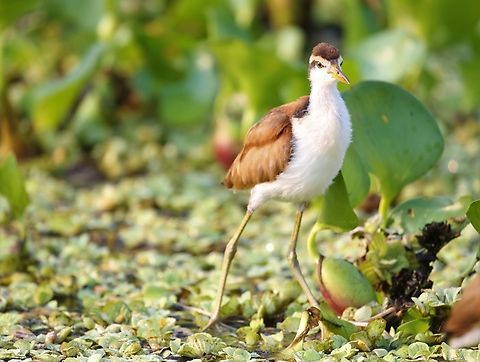
Naming
There are six races, with the nominate "J. j. jacana" being the most widespread. Several of the other subspecies are similar, but "J. j. hypomelaena" of western Panama and northern Colombia has all the chestnut plumage replaced by black, and "J. j. scapularis" of western Ecuador has some black feathers on its chestnut shoulders, and white outer primary feathers.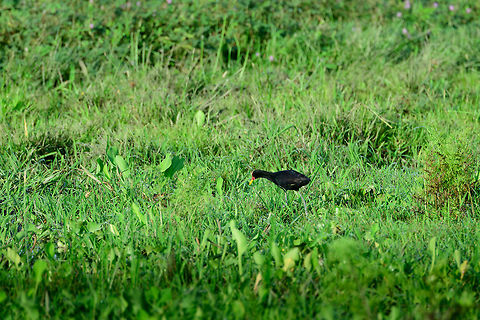
Reproduction
The Wattled Jacana lays four black-marked brown eggs in a floating nest. The male, as with other jacanas and some other wader families like the phalaropes, takes responsibility for incubation, with two eggs held between each wing and the breast. The females are polyandrous, and will help to defend the nests of up to four mates.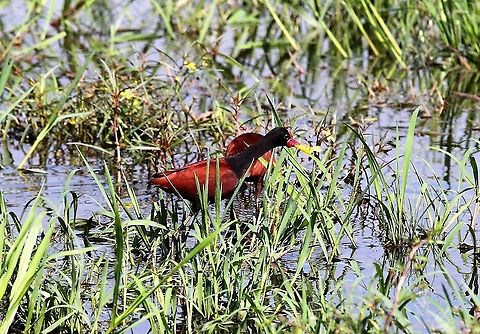
Food
The Wattled Jacana's food is insects, other invertebrates and seeds picked from the floating vegetation or the water’s surface.References:
Some text fragments are auto parsed from Wikipedia.
